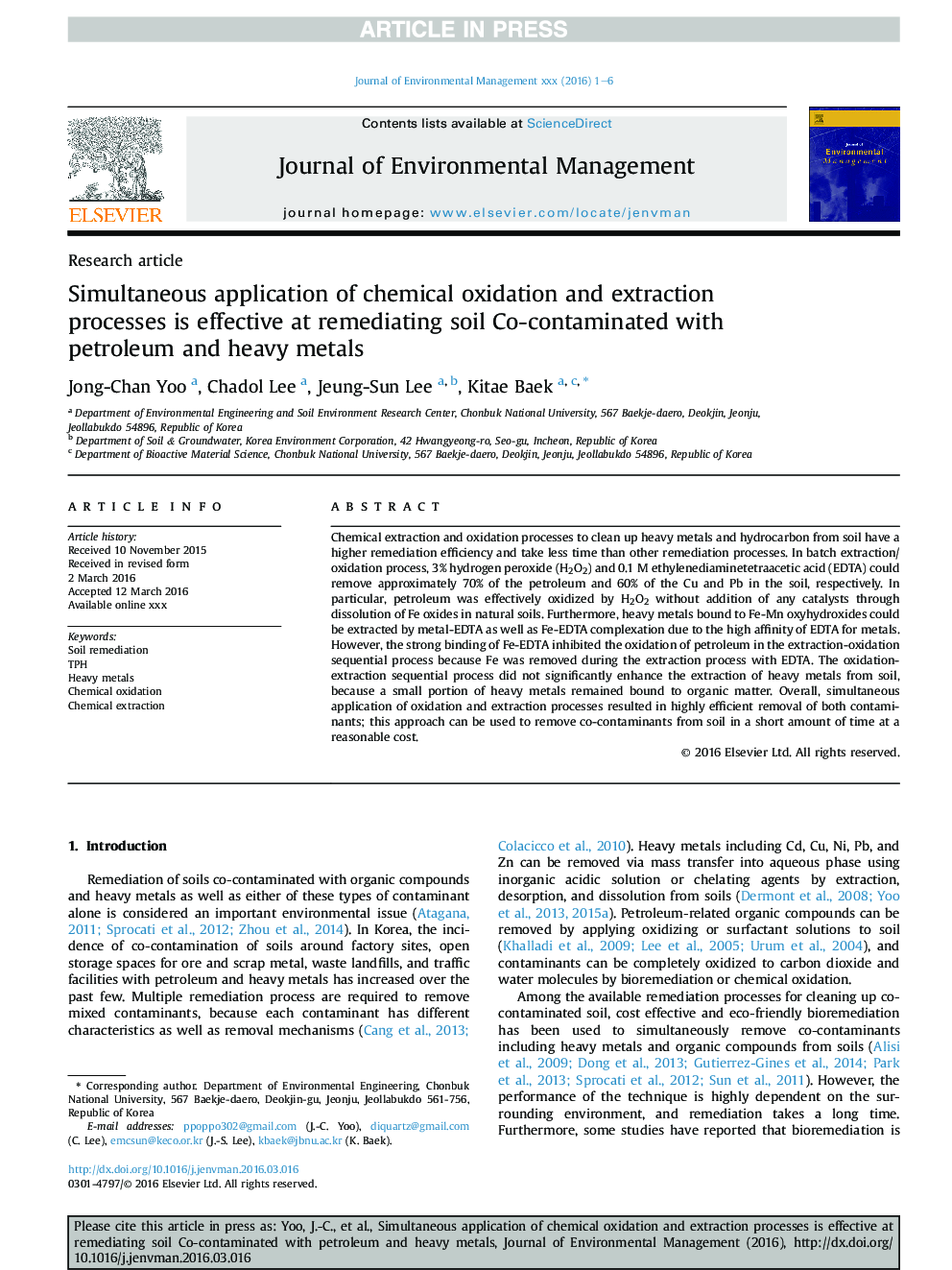| Article ID | Journal | Published Year | Pages | File Type |
|---|---|---|---|---|
| 5117432 | Journal of Environmental Management | 2017 | 6 Pages |
Abstract
Chemical extraction and oxidation processes to clean up heavy metals and hydrocarbon from soil have a higher remediation efficiency and take less time than other remediation processes. In batch extraction/oxidation process, 3% hydrogen peroxide (H2O2) and 0.1Â M ethylenediaminetetraacetic acid (EDTA) could remove approximately 70% of the petroleum and 60% of the Cu and Pb in the soil, respectively. In particular, petroleum was effectively oxidized by H2O2 without addition of any catalysts through dissolution of Fe oxides in natural soils. Furthermore, heavy metals bound to Fe-Mn oxyhydroxides could be extracted by metal-EDTA as well as Fe-EDTA complexation due to the high affinity of EDTA for metals. However, the strong binding of Fe-EDTA inhibited the oxidation of petroleum in the extraction-oxidation sequential process because Fe was removed during the extraction process with EDTA. The oxidation-extraction sequential process did not significantly enhance the extraction of heavy metals from soil, because a small portion of heavy metals remained bound to organic matter. Overall, simultaneous application of oxidation and extraction processes resulted in highly efficient removal of both contaminants; this approach can be used to remove co-contaminants from soil in a short amount of time at a reasonable cost.
Related Topics
Physical Sciences and Engineering
Energy
Renewable Energy, Sustainability and the Environment
Authors
Jong-Chan Yoo, Chadol Lee, Jeung-Sun Lee, Kitae Baek,
